Core M — Intel — WikiChip
| Intel Core M | |
| Core M logo | |
| Developer | Intel |
| Manufacturer | Intel |
| Type | Microprocessors |
| Introduction | August, 2014 (announced) September, 2014 (launch) |
| ISA | x86-64 |
| µarch | Broadwell, Skylake, Kaby Lake |
| Word size | 64 bit
8 octets |
| Process | 14 nm
0.014 μm |
| Technology | CMOS |
| Clock | 2.0 GHz-3.1 GHz |
| Package | FCBGA-1234 |
| Socket | BGA-1234 |
Core M is a family of Consumer Ultra-Low Voltage (CULV) x86 microprocessors introduced by Intel in 2014. Core M microprocessors have ultra-low power (TDP ≤ 4.5 Watts) designed specifically for ultra-thin notebooks and other mobile devices that run fanless.
Contents
- 1 Overview
- 2 Members
- 2.1 Broadwell
- 2.2 Skylake
- 2.3 Kaby Lake
- 3 See Also
Overview[edit]
Core M is a family designed by Intel that directly targets fanless ultra-thin mobile devices with stringent voltage and power restrictions. Unlike the Atom (also x5, x7, et al) which has its own specially designed microarchitecture (e.g. Airmont), the Core M uses Intel’s mainstream microarchitectures (e.g. Broadwell & Skylake) in an attempt to elevate performance while still delivering sub-4.5W TDP. The end result is a processor that has reasonable performance and features compared to an Atom, but a premium.
Core M dies are packaged with the Platform Controller Hub (PCH) die in the same packaging which is only about 1 mm thick and requires no fan.
Members[edit]
Broadwell[edit]
- Main article: Broadwell µarch
| Broadwell-based Core M | ||||||||||||||
|---|---|---|---|---|---|---|---|---|---|---|---|---|---|---|
| Main processor | GPU | |||||||||||||
| Model | Launched | C | T | Freq | Turbo | TDP | cTDP-down | cTDP-up | Mem | Name | Freq | Turbo | ||
| 5Y10 | 2 September 2014 | 2 | 4 | 0.8 GHz
800 MHz |
2 GHz
2,000 MHz |
4.5 W
4,500 mW |
16,384 MiB
16,777,216 KiB |
Intel HD Graphics 5300 | 100 MHz
0.1 GHz |
800 MHz
0.8 GHz |
||||
| 5Y10a | 2 September 2014 | 2 | 4 | 0. 8 GHz 8 GHz
800 MHz |
2 GHz
2,000 MHz |
4.5 W
4,500 mW |
16,384 MiB
16,777,216 KiB |
Intel HD Graphics 5300 | 100 MHz
0.1 GHz |
800 MHz
0.8 GHz |
||||
| 5Y10c | January 2015 | 2 | 4 | 0.8 GHz
800 MHz |
2 GHz
2,000 MHz |
4.5 W
4,500 mW |
3.5 W
3,500 mW |
0.6 GHz
600 MHz |
6 W
6,000 mW |
1 GHz
1,000 MHz |
16,384 MiB
16,777,216 KiB |
Intel HD Graphics 5300 | 300 MHz
0. |
800 MHz
0.8 GHz |
| 5Y31 | January 2015 | 2 | 4 | 0.9 GHz
900 MHz |
2.4 GHz
2,400 MHz |
4.5 W
4,500 mW |
3.5 W
3,500 mW |
0.6 GHz
600 MHz |
6 W
6,000 mW |
1.1 GHz
1,100 MHz |
16,384 MiB
16,777,216 KiB |
Intel HD Graphics 5300 | 300 MHz
0.3 GHz |
850 MHz
0.85 GHz |
| 5Y51 | January 2015 | 2 | 4 | 1.1 GHz
1,100 MHz |
2.6 GHz
2,600 MHz |
4.5 W
4,500 mW |
3.5 W
3,500 mW |
0.6 GHz
600 MHz |
6 W
6,000 mW |
1.3 GHz
1,300 MHz |
16,384 MiB
16,777,216 KiB |
Intel HD Graphics 5300 | 300 MHz
0.3 GHz |
900 MHz
0.9 GHz |
| 5Y70 | 2 September 2014 | 2 | 4 | 1.1 GHz
1,100 MHz |
2.6 GHz
2,600 MHz |
4.5 W
4,500 mW |
16,384 MiB
16,777,216 KiB |
Intel HD Graphics 5300 | 100 MHz
0.1 GHz |
800 MHz
0.8 GHz |
||||
| 5Y71 | January 2015 | 2 | 4 | 1. 2 GHz 2 GHz
1,200 MHz |
2.9 GHz
2,900 MHz |
4.5 W
4,500 mW |
3.5 W
3,500 mW |
0.6 GHz
600 MHz |
6 W
6,000 mW |
1.4 GHz
1,400 MHz |
16,384 MiB
16,777,216 KiB |
Intel HD Graphics 5300 | 300 MHz
0.3 GHz |
900 MHz
0.9 GHz |
| Count: 7 | ||||||||||||||
Skylake[edit]
- Main article: Skylake µarch
| Skylake-based Core M | ||||||||||||||
|---|---|---|---|---|---|---|---|---|---|---|---|---|---|---|
| Main processor | GPU | |||||||||||||
| Model | Launched | C | T | Freq | Turbo | TDP | cTDP-down | cTDP-up | Mem | Name | Freq | Turbo | ||
| m3-6Y30 | 27 September 2015 | 2 | 4 | 0. 9 GHz 9 GHz
900 MHz |
2.2 GHz
2,200 MHz |
4.5 W
4,500 mW |
3.8 W
3,800 mW |
0.6 GHz
600 MHz |
7 W
7,000 mW |
1.5 GHz
1,500 MHz |
16,384 MiB
16,777,216 KiB |
HD Graphics 515 | 300 MHz
0.3 GHz |
850 MHz
0.85 GHz |
| m5-6Y54 | 27 September 2015 | 2 | 4 | 1.1 GHz
1,100 MHz |
2.7 GHz
2,700 MHz |
4.5 W
4,500 mW |
3.5 W
3,500 mW |
0.6 GHz
600 MHz |
7 W
7,000 mW |
1.5 GHz
1,500 MHz |
16,384 MiB
16,777,216 KiB |
HD Graphics 515 | 300 MHz
0.3 GHz |
900 MHz
0.9 GHz |
| m5-6Y57 | 27 September 2015 | 2 | 4 | 1.1 GHz
1,100 MHz |
2.8 GHz
2,800 MHz |
4.5 W
4,500 mW |
3.5 W
3,500 mW |
0.6 GHz
600 MHz |
7 W
7,000 mW |
1.5 GHz
1,500 MHz |
16,384 MiB
16,777,216 KiB |
HD Graphics 515 | 300 MHz
0.3 GHz |
900 MHz
0.9 GHz |
| m7-6Y75 | 27 September 2015 | 2 | 4 | 1.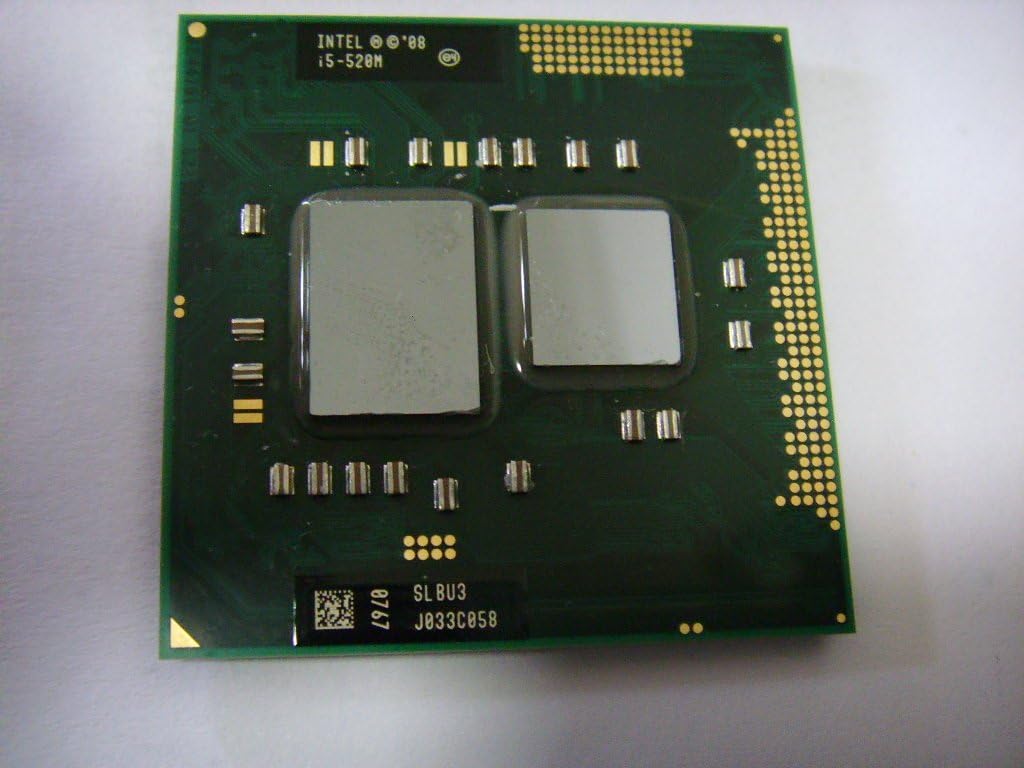 2 GHz 2 GHz
1,200 MHz |
3.1 GHz
3,100 MHz |
4.5 W
4,500 mW |
3.5 W
3,500 mW |
0.6 GHz
600 MHz |
7 W
7,000 mW |
1.5 GHz
1,500 MHz |
16,384 MiB
16,777,216 KiB |
HD Graphics 515 | 300 MHz
0.3 GHz |
1,000 MHz
1 GHz |
| Count: 4 | ||||||||||||||
Kaby Lake[edit]
- Main article: Kaby Lake µarch
With Kaby Lake, Intel rebranded «m5» and «Mm» simply as «i5» and «i7». Intel stated the change took place as an attempt to reduce confusion between the Core m and Core i5/7 families
| Kaby Lake-based Core M | ||||||||||||||
|---|---|---|---|---|---|---|---|---|---|---|---|---|---|---|
| Main processor | GPU | |||||||||||||
| Model | Launched | C | T | Freq | Turbo | TDP | cTDP-down | cTDP-up | Mem | Name | Freq | Turbo | ||
| M3-7Y30 | 30 August 2016 | 2 | 4 | 1 GHz
1,000 MHz |
2. 6 GHz 6 GHz
2,600 MHz |
4.5 W
4,500 mW |
3.75 W
3,750 mW |
0.6 GHz
600 MHz |
7 W
7,000 mW |
1.6 GHz
1,600 MHz |
16,384 MiB
16,777,216 KiB |
HD Graphics 615 | 300 MHz
0.3 GHz |
900 MHz
0.9 GHz |
| M3-7Y32 | 10 April 2017 | 2 | 4 | 1.1 GHz
1,100 MHz |
3 GHz
3,000 MHz |
4.5 W
4,500 mW |
3.75 W
3,750 mW |
0.6 GHz
600 MHz |
7 W
7,000 mW |
1. 6 GHz 6 GHz
1,600 MHz |
16,384 MiB
16,777,216 KiB |
HD Graphics 615 | 300 MHz
0.3 GHz |
900 MHz
0.9 GHz |
| Count: 2 | ||||||||||||||
See Also[edit]
- Intel Core
- Core i3
- Core i5
- Core i7
- AMD G-Series
Intel Core M: Everything you need to know
Apple has just unveiled its refreshed line of 12-inch MacBook laptops, which feature new and more powerful Intel Core M processors. Here’s everything you need to know.
Intel Core M is a huge leap in laptop processor technology. Not only does it allow manufacturers to create laptops with super-thin fanless designs, but it finally unlocks the sort of performance laptop buyers expect. Gone are the days of piddly processors that can barely handle a spreadsheet: with Core M you can absolutely fire up lots of tabs in your web browser and work on email at the same time.
It all means manufacturers can design even thinner, lighter and silent laptops without compromising on performance or battery life.
Related: What about Core I? We explain Intel’s jargon
One of the first products to really show the potential of Core M was the Asus UX305, a 13-inch laptop that weighs just 1.2kg and is 12mm thick, yet it has nearly 12 hours of battery life. Then of course there’s the latest MacBook, which raised the stakes even further by weighing just 900g, being impossibly thin and yet still having 9 hours battery life.
More recently we’ve seen the Microsoft Surface Pro 4, the entry-level model of which is powered by one of the new Skylake Core M chips.
So what makes Core M tick? And what’s the difference between the Broadwell and Skylake generations?
Related: Best Laptops, Ultrabooks and Hybrids
Intel Core M: What is it?
Intel is well known for its ‘tick-tock’ launch strategy, where advancements in manufacturing processes one year are followed by big changes to processor designs the next.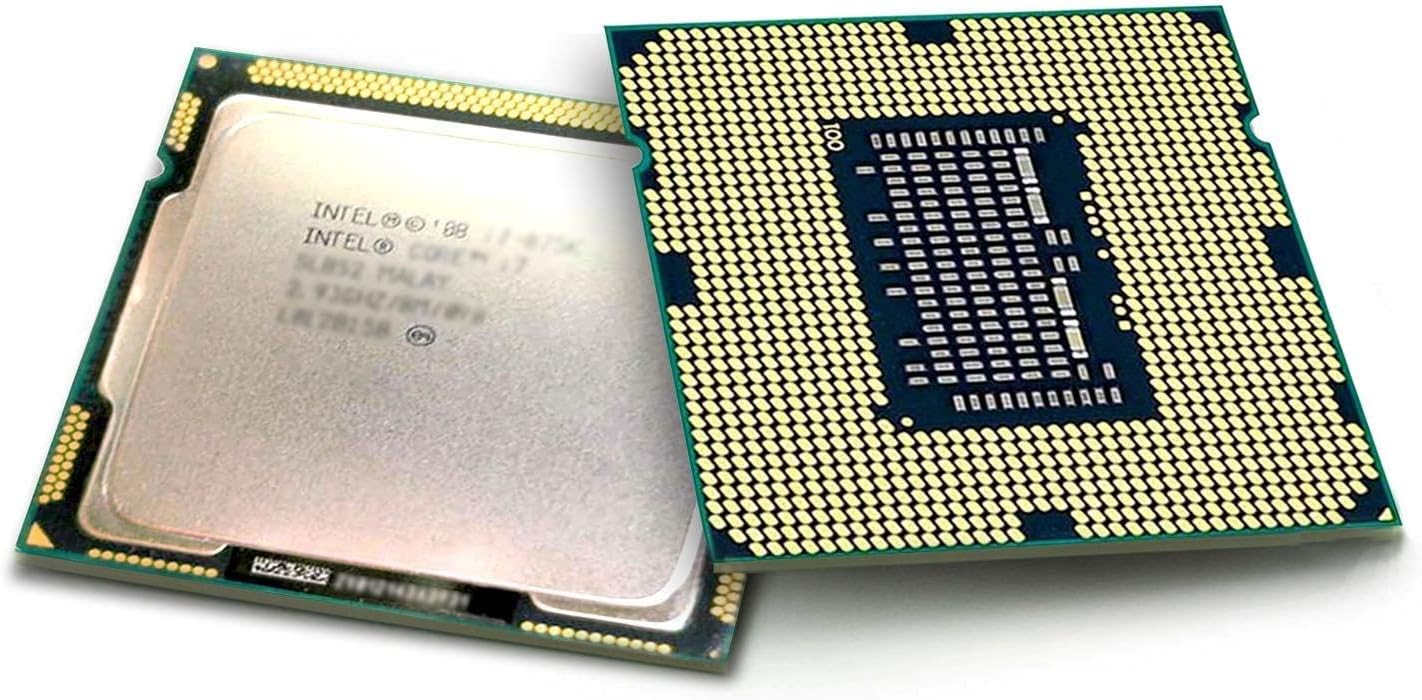 The Broadwell family of chips introduced in 2014 was ostensibly a ‘tick’ that marks the move from 22nm to 14nm manufacturing processes (although it could be argued that the all-new Core M family was therefore both ‘tick’ and ‘tock’).
The Broadwell family of chips introduced in 2014 was ostensibly a ‘tick’ that marks the move from 22nm to 14nm manufacturing processes (although it could be argued that the all-new Core M family was therefore both ‘tick’ and ‘tock’).
The current Skylake standard is a ‘tock,’ with an all-new microarchitecture but using the same 14nm process as Broadwell. Sure enough, there’s a new line of Core M chips that are now making their way into 2-in-1s and notebooks.
This reduction in the size of the transistors that make up the processor results in chips requiring less energy to do their thing, and less energy used means longer battery life and less heat.
However, this move to 14nm alone would not be enough to make for a chip that doesn’t require a fan to keep it cool, so it also has reduced specs compared to normal laptops chips. Things like clock frequency and the performance of the GPU are kept low to make sure power-draw and temperatures don’t get too high.
The key being that whereas these compromises would previously have made for inadequate performance, the inherent power saving of the move to 14nm provides enough head room to allow for a design that ideally balances power saving with providing enough speed for satisfactory performance.
The result is a processor that can be passively cooled yet provides performance on par with processors found in slim and light laptops of three or four years ago. In other words, if you’ve got a 2011/2012 MacBook Air then you’ll know what sort of performance the 2015 MacBook will provide. It’ll just do it in a much smaller, thinner device.
Delving a little deeper into exactly what Core M offers, its headline figure is a Thermal Design Power (TDP – read max power consumption) of just 4.5W. This compares to around 10-15W for a typical laptop processor and 50-100W for desktop processors.
Previously this level of power draw was only possible in severely under-powered Atom processors, such as the Bay-Trail line, which were really only good for more simple tablet-type devices. Core M really is the first processor to bridge the gap between ultra-low TDP and acceptable laptop performance.
Broadwell and Skylake
There are a number of Core M chips split across two generations – those built on the Broadwell architecture (which includes the new MacBook) and the more recent Skylake architecture.
The original Broadwell chips boil down to five types. There’s the M-5Y10 chips, which are all clocked at 800MHz with a 2GHz maximum Turbo, and they’ve got HD Graphics 5300 cores clocked up to 800MHz.
Then there’s the M-5Y31 that starts at 900MHz and turbos to 2.4GHz with a max graphics speed of 850MHz. Next is M-5Y51 (1.1GHz – 2.6GHz, 900MHz) and M-5Y70 (1.1GHz – 2.6GHz, 850MHz) and finally the M-5Y71 which runs at 1.2GHz, turbos to 2.9GHz and the graphics top out at 900MHz.
The latter is the chip being used in the new MacBook, which means it offers loosely comparable performance to previous MacBook Airs, but graphics performance is still be some way down.
Intel’s Skylake Core M processors, announced in September of last year, have a similar 4.5-watt TDP to the Broadwell chips, but come with improved Intel HD Graphics 515 that is an estimated 41 percent faster, and which can handle modern 4K video standards. You also get even better battery life.
The Skylake family is broken down into three main families with increasing performance: Core m3, m5 and m7. There are four chips available across these four families. There’s a 900MHz m3, two 1.1GHz Core m5 chips, and a 1.2GHz Core m7.
There are four chips available across these four families. There’s a 900MHz m3, two 1.1GHz Core m5 chips, and a 1.2GHz Core m7.
All in all, the advancement between the generations is considerable, but you’re still looking at the lower end of ‘full’ laptop performance.
Intel Core M: Performance
We’ve tested a few Broadwell Intel Core M products in our time, such as the Asus UX305. In Geekbench, that device got a score of 4098, while last year’s MacBook Air 13 scored 5401. Another example is the UX305 scored 111cp in the latest Cinebench benchmark, which is only a tad faster than the 99cp of our Asus UX31E ultrabook from 2011.
Where this is felt most acutely is in graphics, where the Intel HD5300 graphics processor of the Broadwell Core M is a throwback to the performance of several years ago. Again this is reflected in our benchmarks where the UX305 could manage just 9.3fps in Unigine Heaven at 1,366 x 768 with basic graphics settings. In comparison the Microsoft Surface Pro from 2012 managed 12.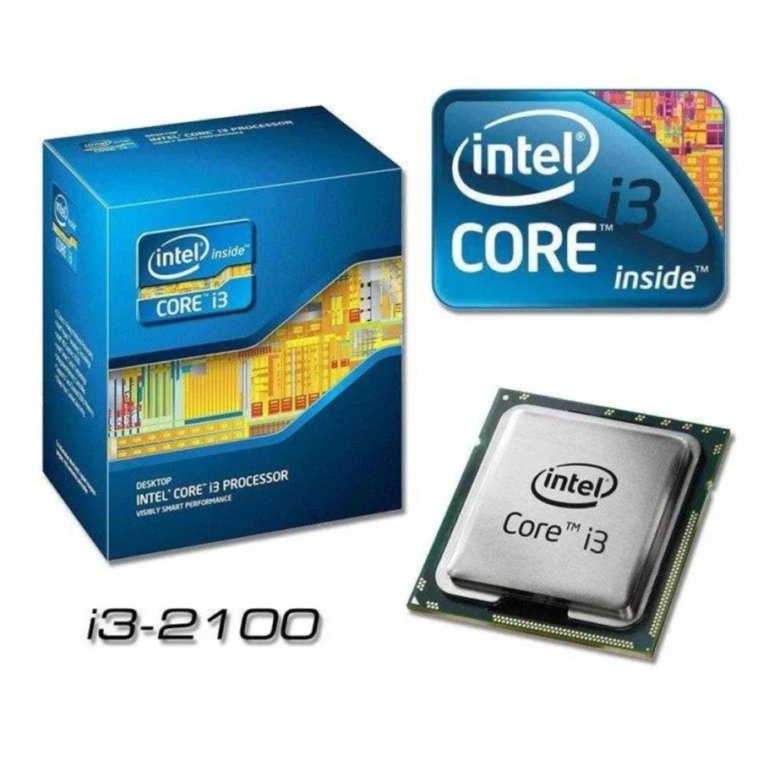 5fps.
5fps.
As such modern, 3D gaming is just not viable on these chips, especially not at the native resolution of the screens many of these lovely new laptops are using.
Initial Skylake benchmarks appear to be a notable improvements. We’ve seen Geekbench results showing as much as a 20 percent improvement for single and multi-core scores – but you still wouldn’t use such devices for high-end gaming.
Before we put you off too much, though, realise that this is precisely the sweet-spot of performance Intel was aiming for. Yes, it’s a step back from Ivy Bridge but it is sufficient for general day-to-day computing and it’s also why the MacBook can weigh just 900g and still have nearly 10 hours battery life.
Intel Core M: Impressions so far
The Asus Zenbook UX305 impressed us, and proved to be one of the best laptops of 2015. This super-slim 13-inch device comes with astonishing battery life of nearly 12 hours, though it does achieve this by using the lowest spec Core M part so performance is quite basic.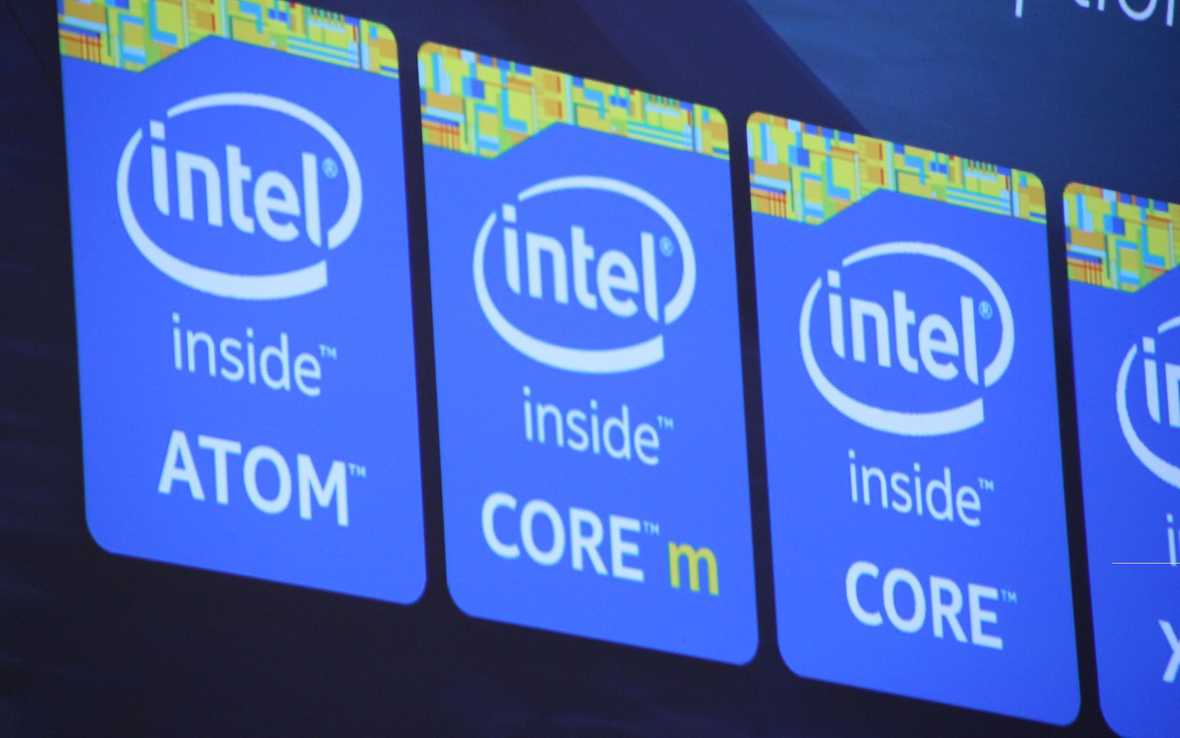
Meanwhile, the Asus Transformer Book T300 Chi is a well made tablet-notebook hybrid. It won’t be taking the MacBook Air on for sheer style or functionality (a lack of full-sized USB ports sees to that), but it’s compact, has a great screen, and benefits from Core M’s power and efficiency.
Now the new MacBook comes with a 12-inch screen and Retina screen and with Intel Core M. This means it is is just 13.5mm thick, fanless and weighs just two pounds (900g). That’s far thinner and lighter than the previous generation MacBook Air. The latest version, announced for 2016, drops the previous-generation Broadwell silicon and replaces it with newer, more efficient Skylake architecture in the form of Core m3, m5 and m7 chips. Apple reckons there’ll be an extra hour of battery life to be gained from the new hardware, as well as better graphics performance from Intel HD Graphics 515.
For an example of what that newer Skylake chip can do, look no further than the entry-level Surface Pro 4. Microsoft’s hybrid was one of our favourite laptops of 2015, though it’s worth providing the major caveat that we reviewed the i5 model – a much noisier yet much more capable machine.
Microsoft’s hybrid was one of our favourite laptops of 2015, though it’s worth providing the major caveat that we reviewed the i5 model – a much noisier yet much more capable machine.
Still, by all accounts the m3-packing Surface Pro 4 is a well balanced and beautifully discrete portable with few real world concessions.
Should I buy Intel Core M?
Deciding whether a Core M product is for you is actually quite a tough call. For the most part they offer perfectly acceptable performance, great battery life and a new level of thin and light laptop and hybrid designs.
However, for more heavy users, the step down in performance – especially if you like to play the odd game on your laptop – means you’ll probably want to be looking elsewhere, whether it’s a MacBook Air or any other product that runs a Core i5/i7 product from the Broadwell or Skylake selection.
What we will say is that the newer Skylake design provides a notably better balance of performance and low power consumption than Broadwell, so more demanding users should be sure to check that the newer chip is listed on the spec sheet of their next device.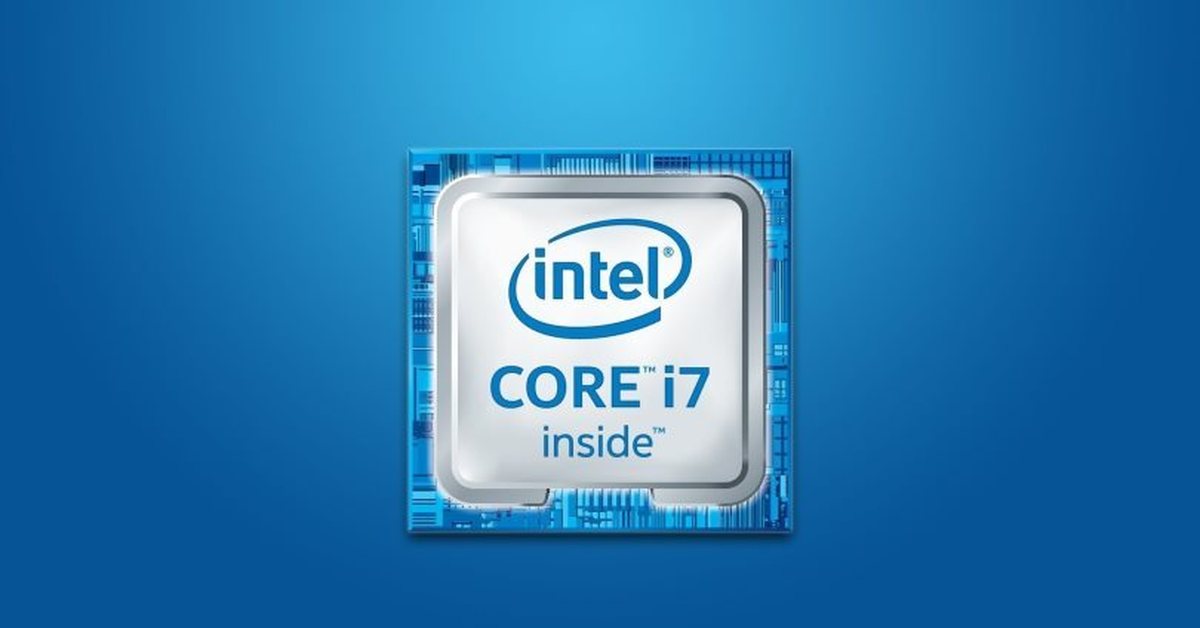
Intel Core M: A Bright Future
Core M represents a great leap forward for ultra-portable laptops and hybrid devices, with it finally bringing true laptop-class performance to the passively-cooled product space. This opens up opportunities for a new level of thinness and lightness for these devices.
However, while performance is laptop-class, it’s laptop-class from about four or five years ago. So while the latest MacBook is even thinner and lighter than the MacBook Air, and offers similar battery life, its performance is more in-line with models several generations earlier.
The Surface Pro 4’s entry-level model, meanwhile, finds itself cut adrift from the rest of the range in performance as well as price.
Core M is all about bringing that ‘good enough’ level of performance to a new type of product.
Still, while there is some compromise in opting for a Core M-class laptop or hybrid computer there’s no doubting it’s an exciting new era and we can’t wait to see what new products arrive based on the technology.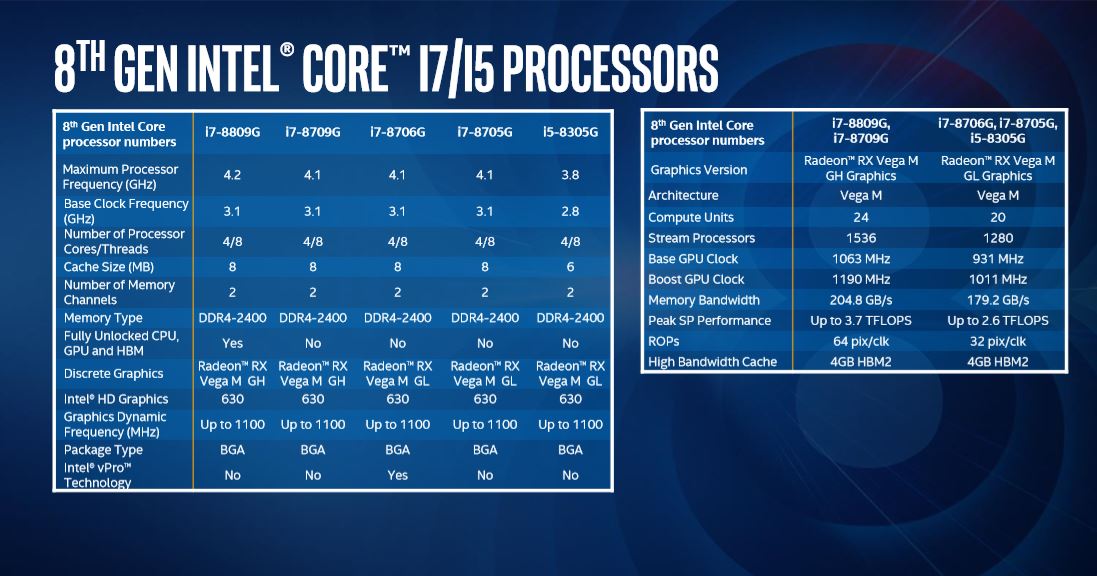
Intel Core M Processor / Sudo Null IT News system-on-a-chip architecture and describes the Intel® technologies it implements, including the Intel® HD Graphics 5300.
The Intel® Core™ M Processor Family delivers higher performance in a smaller footprint, reduced power and cooling requirements (great for thin, fanless devices), and longer battery life. Processors support the following technologies:
- Intel HD5300 Graphics and Intel® Wireless Display 5.0;
- Intel Wireless-AC 7265 and support for wireless docking (in 2015) via WiGig;
- Intel® Smart Sound Technology;
- Intel® Platform Protection Technology and other security features.
Intel Core M Processor Highlights
Size Down + Performance Up = Reduced Power and Cooling Requirements
Intel Core M — the first processors to be manufactured based on 14nm technology. The silicon die size has been reduced by more than 30%, while the number of transistors has increased by more than 300 million. Intel Core M processors have lower power consumption and generate less heat. The three models of this family, whose production began in the fourth quarter of 2014, have a thermal power of only 4.5 watts. This means that these processors do not need a fan to cool them. These processors will enable you to achieve high performance in the thinnest devices (thickness less than 9mm), including tablets and transformers.
Intel Core M processors have lower power consumption and generate less heat. The three models of this family, whose production began in the fourth quarter of 2014, have a thermal power of only 4.5 watts. This means that these processors do not need a fan to cool them. These processors will enable you to achieve high performance in the thinnest devices (thickness less than 9mm), including tablets and transformers.
Figure 1 shows the reduction in thermal power from 18W in 2010 to 4.5W in an Intel Core M processor. This is a fourfold reduction in 4 years and a 60% reduction compared to 2013. On the right in fig. Figure 1 shows a size comparison of the 4th Gen Intel® Core™ processor with the new Intel Core M processor. By reducing the processor footprint by approximately 50%, the processor footprint on the board has been reduced by approximately 25%.
Intel Core M processors are smaller than 4th generation Intel Core processors. At the same time, two Intel Core M cores are provided with a 4 MB cache. Intel® Hyperthreading Technology supports four threads running concurrently. Intel® Turbo Boost Technology 2.0 can boost core clock from 0.8 GHz to 2 GHz,
Intel® Hyperthreading Technology supports four threads running concurrently. Intel® Turbo Boost Technology 2.0 can boost core clock from 0.8 GHz to 2 GHz,
and for Intel Core M 5Y70 processors — from 1.1 GHz to 2.6 GHz.
| Processor code | Core frequency (GHz) | Maximum frequency (GHz) |
|---|---|---|
| 5Y70 | 1.1 | 2.6 |
| 5Y10 | 0.8 | 2.0 |
| 5Y10A | 0.8 | 2.0 |
| Functional cores:.2 Heat output: 4.5 W Integrated graphics cores: 2 Cache: 4 MB |
||
Figure 2. 2014 Intel Core M processor models
CPU, GPU, memory controller, sound controller and network interfaces are implemented in a single die with 1.3 billion transistors, so you should not expect performance degradation. What’s more, when compared to the previous generation Intel® Core™ i5-4320Y processor, there was a significant performance boost.
Figure 3: Intel Core M 5y70 performance improvement over Intel Core i5-4302Y
Power technology
Throughout this document, numerous Intel technologies are mentioned that are designed to reduce power.
- Intel® Turbo Boost Technology 2.0 includes a power tracking module that calculates the power of the CPU and GPU cores, as well as a power management module that directs power to where it is needed.
- Enhanced Intel SpeedStep® Technology with support for C-states C0, 1, 1E, 3, and 6-10 provides the lowest idle state power consumption. If more processing power is required, the processor raises the voltage for fast switching. With hyperthreading enabled, this switch happens at the thread level.
- Power-optimized interrupt processing using X2 APIC and PAIR (Power-Aware Interrupt Routing): The state of the cores is checked to avoid waking up cores that are in a deep sleep state.
Figure 4: Power Usage/Savings Comparison
Other components also have improved power management capabilities, see the related sections below for details.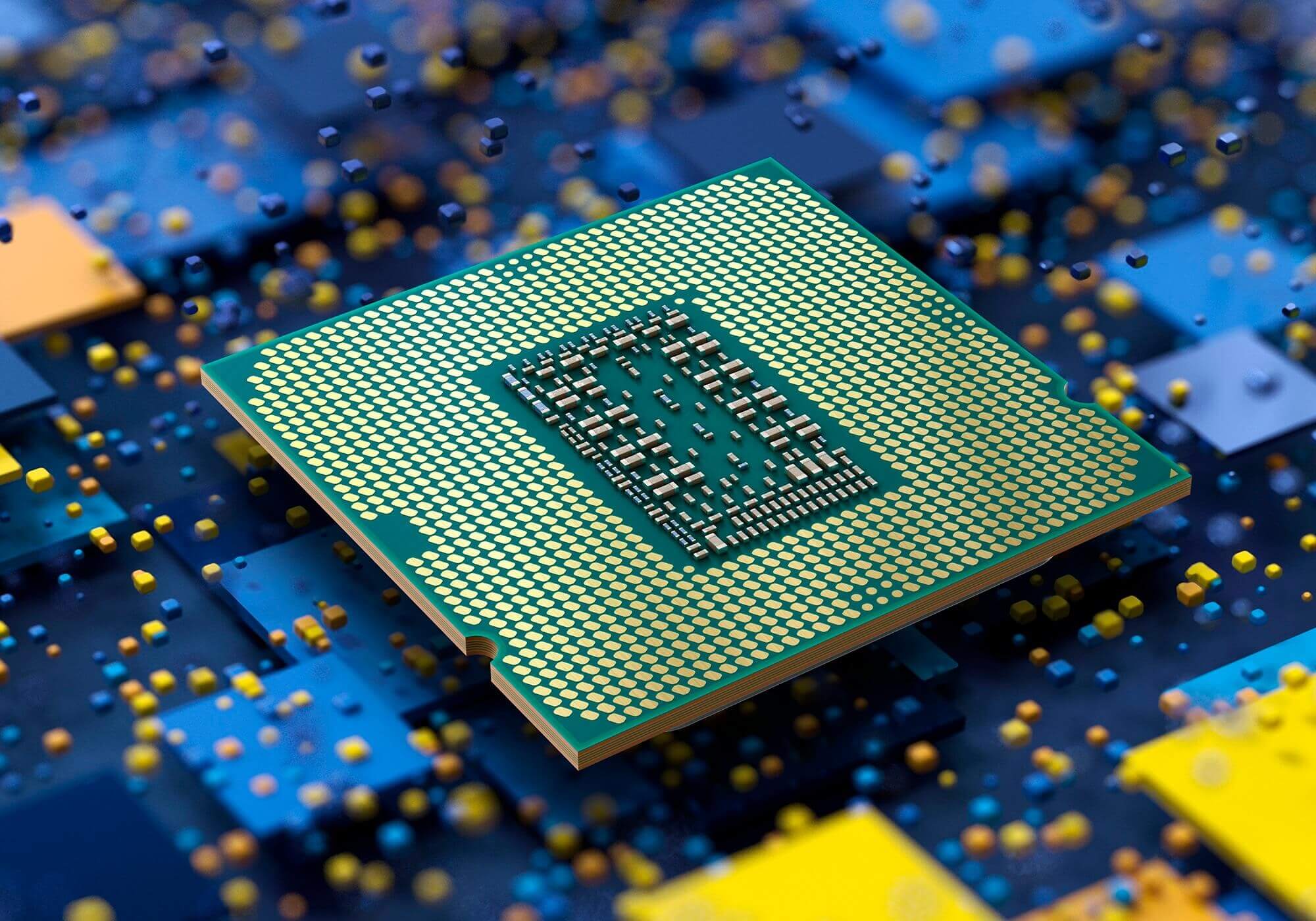
Other components
The same Intel Core M die also houses a smart power PCH platform controller node that supports PCIe NAND, PCIe 2.0 (12×1,x2, or x4 lanes) and two additional USB 2.0 ports. The integrated memory controller supports Intel® Fast Memory Access and Intel® Flex-Memory Access technologies. Energy savings are achieved through solutions such as conditional self-refreshing, dynamic voltage buckling, and turning off unused system memory via four switchable modules. 1600MHz or 1333MHz DDR3L or LPDDR3 memory is supported, divided into 2 channels.
Intel® HD Graphics 5300
A new member of the Intel HD Graphics family, the Intel HD Graphics 5300 GPU, runs at a starting base frequency of 100 MHz that dynamically ramps up to 800 MHz (850 MHz on the 5Y70). We note support for Intel® Quick Sync Video technologies (encoding and post-processing of multimedia and graphics-intensive applications), Intel® In Tru™ 3D, Intel® Clear Video HD, and Intel® Flexible Display Interface (Intel® FDI) . The Intel HD Graphics 5300 supports three displays (eDP/DP/HDMI interfaces). The HD Graphics 5300 uses the GT2 processor of this family (189million transistors), it contains 24 shader modules, 4 texture mapping modules and 1 rendered image output module. DirectX* 11.1 and later, OpenGL* 4.2, OpenCLTM 2.0, Shader Model 5.0 are supported. The GPU is capable of displaying up to UltraHD resolution (3840 x 2160) via HDMI at 24Hz.
The Intel HD Graphics 5300 supports three displays (eDP/DP/HDMI interfaces). The HD Graphics 5300 uses the GT2 processor of this family (189million transistors), it contains 24 shader modules, 4 texture mapping modules and 1 rendered image output module. DirectX* 11.1 and later, OpenGL* 4.2, OpenCLTM 2.0, Shader Model 5.0 are supported. The GPU is capable of displaying up to UltraHD resolution (3840 x 2160) via HDMI at 24Hz.
Testing showed that HD video conversion with Cyberlink* MediaEsspresso* was 80% faster than the previous generation Core i5 processor, and the speed in games (3DMark* IceStorm Unlimited v 1.2.) increased by 40%. At the same time, a system with an Intel Core M processor lasted 1.7 hours longer on battery power (with local video playback and a 35 Wh battery).
Figure 5. Intel® HD Graphics 5300
(All tests performed on Intel Reference Platforms with 4 GB Dual Channel LPDDR3-1600 (2 2 GB modules) with 160 GB Intel SSD running Windows 8. 1 The Core M processor system used BIOS version 80.1, the system with the Core i5-4302Y (previous generation) processor used BIOS version WTM137. Both systems used the Intel® HD Graphics driver version 15.36.3650 and the thermal power was 4.5 W. Other settings: system power policy: balanced, wireless network adapter: enabled, battery capacity: 35 Wh).
1 The Core M processor system used BIOS version 80.1, the system with the Core i5-4302Y (previous generation) processor used BIOS version WTM137. Both systems used the Intel® HD Graphics driver version 15.36.3650 and the thermal power was 4.5 W. Other settings: system power policy: balanced, wireless network adapter: enabled, battery capacity: 35 Wh).
Additional battery life is provided by the following Intel HD Graphics 5300 features.
- Intel® Display Power Savings Technology (Intel DPST) 6.0 reduces backlight levels while increasing contrast and brightness.
- Intel® Automatic Display Brightness Technology, which uses a sensor on the front of the device to adjust the brightness of the screen according to ambient light.
- Intel® SDRRS (Seamless Display Refresh Rate) Technology reduces screen refresh rate when the battery is low.
- Intel® Rapid Memory Power Management (Intel® RMPM), which automatically refreshes memory from low power states
- C-state of the graphics rendering module (RC6), reducing the voltage of the power rail when there is no load.
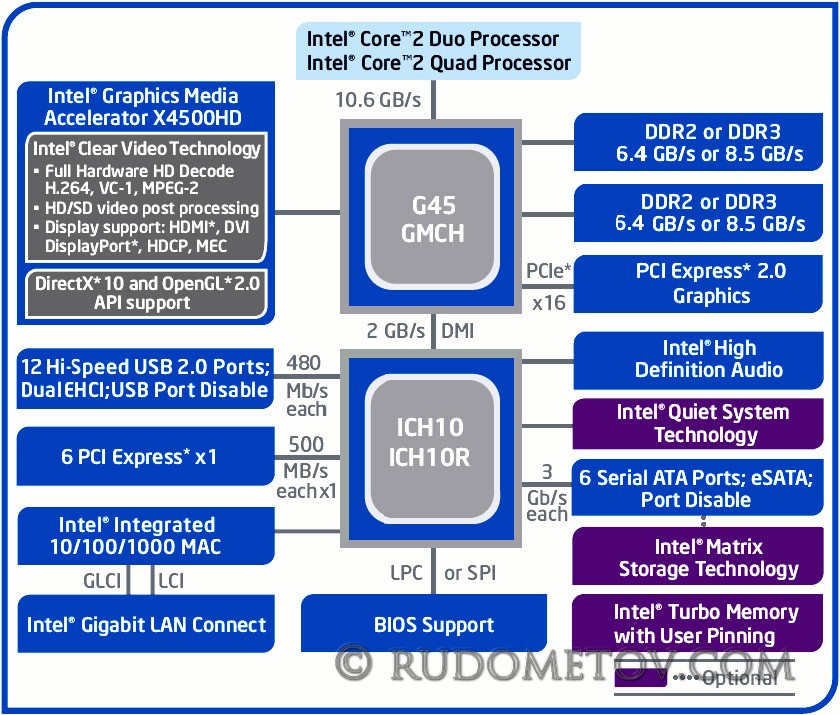
- Intel® Smart 2D Display Technology (Intel® S2DDT), which reduces the number of memory reads to update the display, only works in single-pipeline mode, not usable with 3D applications).
- Intel® Graphics Dynamic Frequency Technology that dynamically increases GPU frequency and voltage as needed.
Intel® Wireless-AC7265 Gen2
The Intel Core M processor family also features faster WLAN adapters (15% to 100% better performance) in a 70% smaller footprint using the M.2 1216 frame. Compared to the Intel® Dual Band Wireless-A7260, the AC7265 has improved channel reliability, extended coverage, more concurrent devices supported, and 1080p video streaming capability. At the same time, the new wireless adapter consumes 50% less power when idle (4 mW) and 30% less when operating (8 mW when browsing the web).
Intel® Wireless-AC7265
Intel plans to introduce WiGig wireless docking capability to the Intel Core M family in 2015.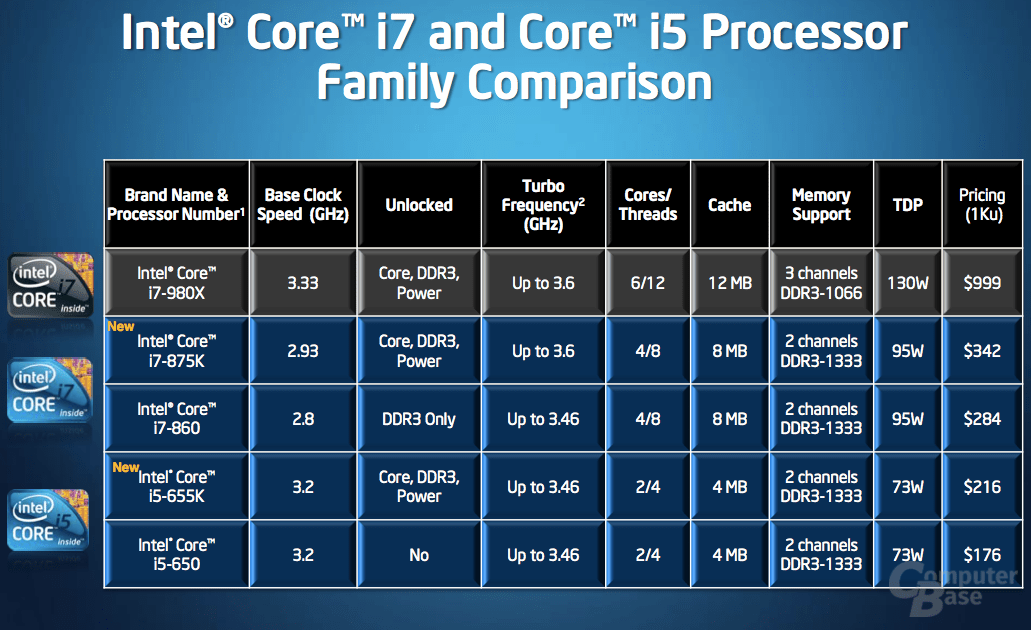
Intel® Wireless Display 5
The next generation of Intel® Wireless Display Technology (Intel® WiDi) supports 1920 x 1080p at 60fps, faster connectivity (6 seconds or less), and lower latency gaming (65ms or less).
Supported technologies
- HDCP 2.2
- Adaptive scaling and frame rate
- UoIP: multi-point touch screen and gesture control
- Embedded Intel® Update Manager for easy driver updates
- Support for all full screen DX9/DX11 game formats with game mode detection
- Includes Intel WiDi Remote software for managing multiple windows while displaying two screens at the same time
- Additional Intel Pro WiDi features designed for use in conference rooms
- DCM (Split Channel Mode)
- Privacy screen
- WPAN insulation
- Handling
See also Building Intel WiDi Applications for Ultrabooks.
Intel® Smart Sound Technology
Integrated into the PCN platform controller node is a new, more powerful I2S digital signal processor. Intel Smart Sound Technology (Intel® SST) reduces power consumption by offloading the system CPU: the signal processor takes over the audio processing tasks and supports MP3/AAC decoding, Waves* and DTS* post-processing, and wake-up on voice command. For Intel SST, you must use the I2S codec.
?
Security including Intel® Platform Protection Technology
Systems with Intel Core M processors are equipped with enhanced security features, including the following.
- Intel® Virtualization Technology (Intel® VT-d and Intel® VT-x with EPT ) — Optimize virtual machine memory usage, support QoS
- Intel® AES-NI (Intel® Advanced Encryption Standards — New Instructions) Instructions — 6 Intel® SSE Instructions for High Performance Encryption
- Intel® Secure Key — Dynamic Random Number Generator
- PCLMULQDQ (half multiplication) — often used in encryption
- OS Protection
- Disable the execution bit (ND)
- SMEP (Supervisor Mode Execution Security) and SMAP (Supervisor Mode Access Security)
- Intel® Device Protection with Boot Guard
- Intel® Active Management Technology v10
The Intel Core M 5Y70 processors also support Intel vPro™, Intel® Trusted Execution (Intel® TXT), and Windows* Instant Go* (formerly Connected Standby) technologies.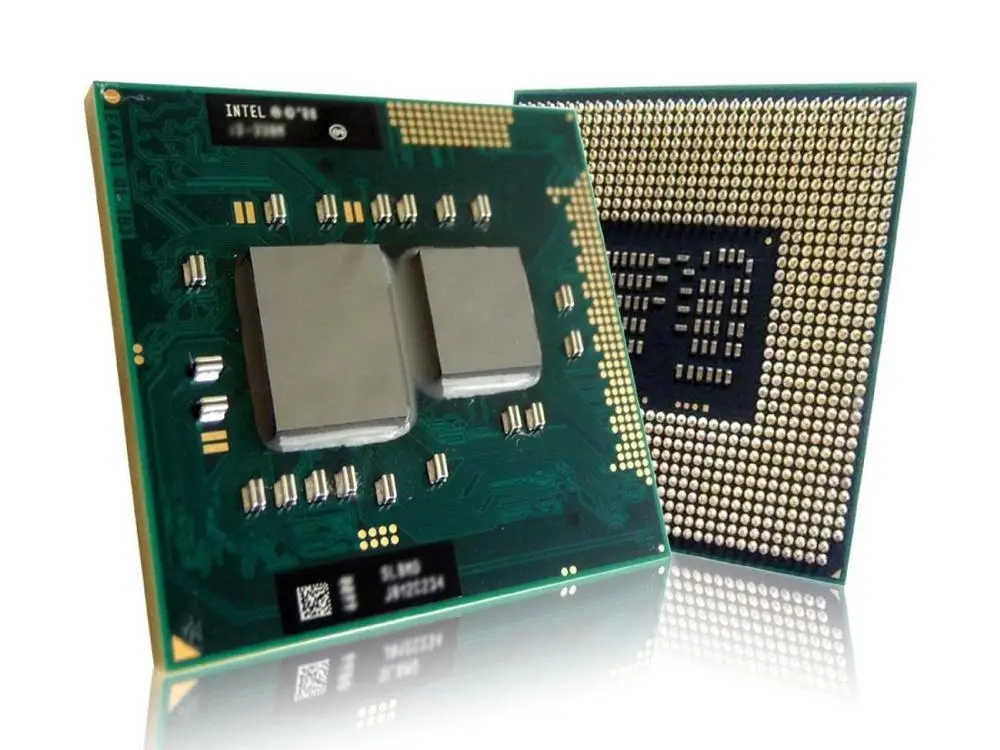
Developer’s note
Consider using the following components and calls when developing applications for the Intel Core M processor family.
- When using Intel SpeedStep Technology, use the MWAIT instruction and substates for most power transitions, but use the HLT instruction for C1/C1E states. For more information on core C-states, see the Intel Core M Processor Family Reference Volume 1.
- Intel® Transactional Synchronization Extensions — New Instructions (Intel® TSX-NI) provides the ability to fine-tune locks by programming only coarse locks. See the Intel® Architecture Instruction Set Extensions Programming Reference.
- A new instruction in the Intel® AVX2 kit, synthesized floating point multiplication and addition (FMA), is useful for face recognition and other computationally intensive tasks.
- Apply touch application optimizations. See Developer’s Touch Guide: Ultrabooks and Tablets, Developing with the Desktop API, and Handling touch input in Windows* 8 apps.

- Optimize sensor applications including GPS, compass, gyroscope, accelerometer, and light sensor. Leverage Intel® RealSense™ Technology and Windows 8.1 Sensor APIs (See Design Guide for Sensors on Windows* 8 Ultrabooks and Tablets and Detecting Ultrabook Sensors in Windows* 8).
Other Intel documentation and helpful tools
- Intel® RealSense™ 2014 SDK
- Developer’s Guide for Intel® Graphics
- Intel® Media SDK
- Intel® Graphics Performance Analyzers (Intel® GPA)
- Intel® Advanced Vector Extensions (Intel® AVX)
- Intel® 64 and IA-32 Architecture Software Developer’s Guides
- List of software development tools
- Learn more about Intel Core M
processors
Intel Core M-5Y31 vs Intel Core m3-7Y30: What is the difference?
37points
Intel Core M-5Y31
38points
Intel Core m3-7Y30
Comparison winner
€ 449
vs
61 facts in comparison
Intel Core M-5Y31
Intel Core m3-7Y30
Why is Intel Core M-5Y31 better than Intel Core m3-7Y30?
- 0.
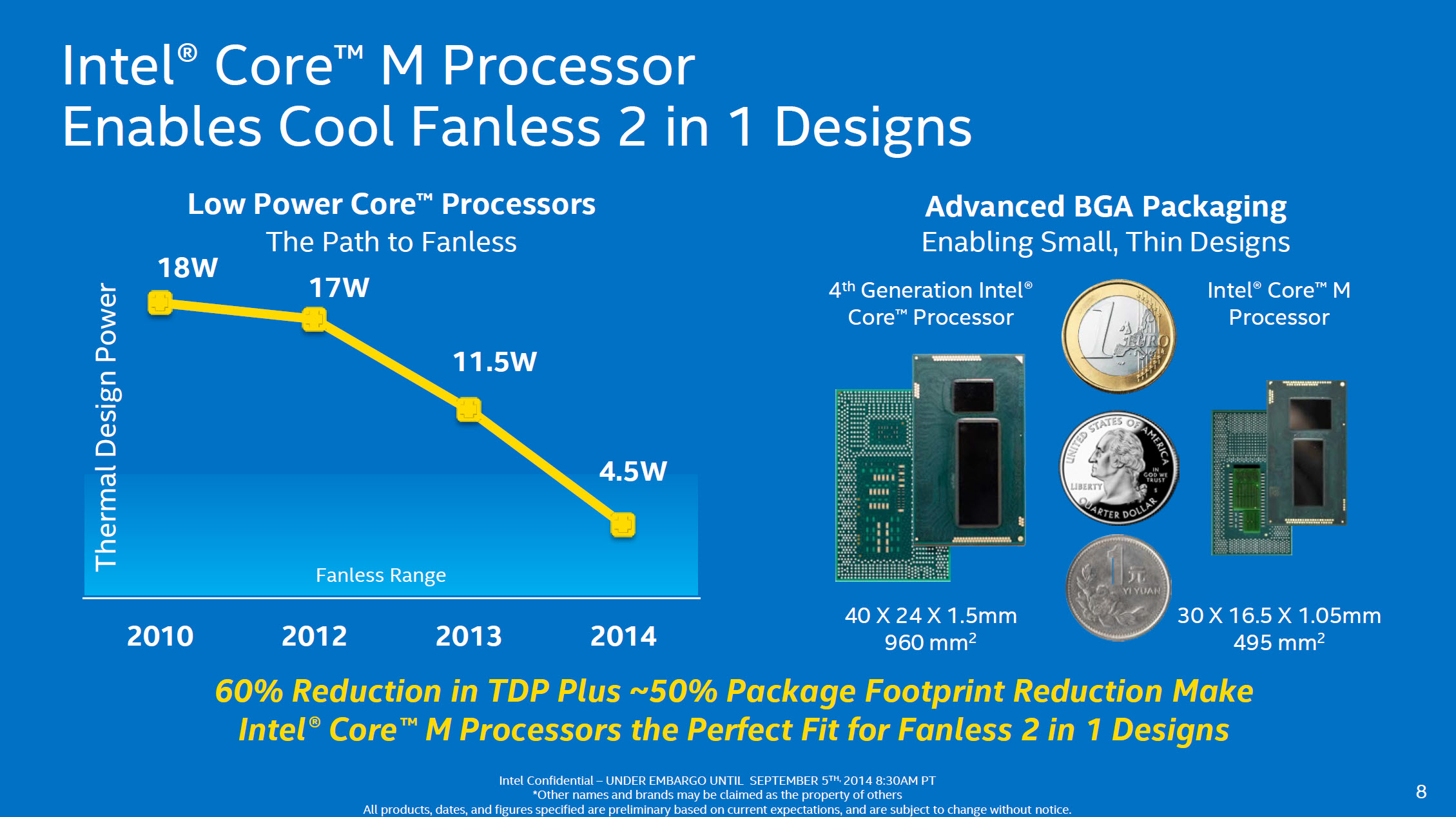 5MB more L2 cache?
5MB more L2 cache?
1MB vs 0.5MB - 0.25MB/core more L2 cache per core?
0.5MB/core vs 0.25MB/core - Supports memory debug code?
Why is Intel Core m3-7Y30 better than Intel Core M-5Y31?
- 11.11% higher CPU speed?
2 x 1GHz vs 2 x 0.9GHz - 266MHz higher RAM speed?
1866MHz vs 1600MHz - 0.2GHz higher turbo clock speed?
2.6GHz vs 2.4GHz - 31.18% higher PassMark score?
2600 vs 1982 - 4.2GB/s more memory bandwidth?
29.8GB/s vs 25.6GB/s - 11.7% higher PassMark result (single)?
1442 vs 1291 - 0.8 newer version of DirectX?
12 vs 11.2 - 50MHz faster GPU turbo speed?
900MHz vs 850MHz
Intel Core M-5Y31 0
vs
Intel Core i3-1005G1
Intel Core M-5Y31
vs
Intel Celeron N4020
Intel Core m3-7Y30
vs
Intel Core i5-8250U
Intel Core M-5Y31
vs
Intel Core i7-7500U
Intel Core m3-7 Y30
vs
Intel Core M3-8100Y
Intel Core M-5Y31
vs
Intel Core i5-7200U
Intel Core m3-7Y30
vs
Intel Core i5-7Y54
Intel Core M-5Y31
vs
Intel Core i7- 7700HQ
Intel Core m3-7Y30
vs
Intel Core i3-7100U
Intel Core M-5Y31
vs
Intel Core i7-8550U
Intel Core m3-7Y30
vs
Intel Core i3-7020U
Intel Core M- 5Y31
vs
Intel Core M-5Y51
Intel Core m3-7Y30
vs
Intel Core m3-6Y30
Intel Core M-5Y31
90 023 vs
Intel Pentium Gold 4425Y
Intel Core m3- 7Y30
vs
Intel Celeron N4100
Intel Core M-5Y31
vs
Intel Pentium Silver N5000
Intel Core m3-7Y30
vs
Intel Core i5-6200U
Intel Core m3-7Y30
vs
Intel Celeron N3350
Price Match
Intel Core m3-7Y30
| Product | Shop | Price | |
|---|---|---|---|
Intel® Core™ i7-13700K Desktop-Prozessor. ..Intel® Core ™ i7-13700K Desktop-Prozessor 16 Kerne (8 P-Kerne + 8 E-Kerne) 30M Cache, bis zu 5.4 GHz ..Intel® Core ™ i7-13700K Desktop-Prozessor 16 Kerne (8 P-Kerne + 8 E-Kerne) 30M Cache, bis zu 5.4 GHz |
€449 | ||
| Intel Core i9-13900K Desktop-Prozessor 2…Intel Core i9-13900K Desktop-Prozessor 24 Kerne (8 P-Kerne + 16 E-K erne) 36M Cache, bis zu 5.8 GHz BX8071513900K | €616 | ||
| Intel Core i5-13400F Processor 20 MB Sma…Intel Core i5-13400F Processor 20 MB Smart Cache Box | €230 | ||
| ZENTRALPROZESSOR Intel Core i5-13600K | €358 | ||
User reviews
Performance
CPU speed
2 x 0.9GHz
2 x 1GHz
CPU speed indicates how many processing cycles per second the processor can perform, considering all its cores (processors). It is calculated by adding the clock speeds of each core or, in the case of multi-core processors, each group of cores.
processor thread
More threads result in better performance and better multitasking.
turbo clock speed
2.4GHz
2.6GHz
When the processor is running below its limits, it can jump to a higher clock speed to increase performance.
Has an unlocked multiplier
✖Intel Core M-5Y31
✖Intel Core m3-7Y30
Some processors come with an unlocked multiplier and can be easily overclocked for better performance in games and other applications.
L2 cache
More L2 cache results in faster results in CPU and system performance tuning.
L3 cache
More L3 scratchpad memory results in faster results in CPU and system performance tuning.
L1 cache
More L1 cache results in faster results in CPU and system performance tuning.
L2 core
0.5MB/core
0.25MB/core
More data can be stored in L2 scratchpad for access by each processor core.
L3 core
2MB/core
2MB/core
More data can be stored in the L3 scratchpad for access by each processor core.
Geotagging
PassMark result
This benchmark measures CPU performance using multithreading.
PassMark result (single)
This benchmark measures processor performance using a thread of execution.
Cinebench R20 result (multi-core)
Unknown. Help us offer a price. (Intel Core M-5Y31)
Unknown. Help us offer a price. (Intel Core m3-7Y30)
Cinebench R20 is a test that measures the performance of a multi-core processor by rendering a 3D scene.
Cinebench R20 result (single core)
Unknown. Help us offer a price. (Intel Core M-5Y31)
Unknown. Help us offer a price. (Intel Core m3-7Y30)
Cinebench R20 is a test to evaluate the performance of a single core processor when rendering a 3D scene.
Geekbench 5 result (multi-core)
Unknown. Help us offer a price. (Intel Core M-5Y31)
Unknown. Help us offer a price. (Intel Core m3-7Y30)
Geekbench 5 is a cross-platform benchmark that measures the performance of a multi-core processor. (Source: Primate Labs, 2023)
(Source: Primate Labs, 2023)
Geekbench 5 result (single core)
Unknown. Help us offer a price. (Intel Core M-5Y31)
Unknown. Help us offer a price. (Intel Core m3-7Y30)
Geekbench 5 is a cross-platform benchmark that measures the single-core performance of a processor. (Source: Primate Labs, 2023)
Blender test result (bmw27)
Unknown. Help us offer a price. (Intel Core M-5Y31)
Unknown. Help us offer a price. (Intel Core m3-7Y30)
The Blender benchmark (bmw27) measures CPU performance by rendering a 3D scene. More powerful processors can render a scene in a shorter time.
Blender (classroom) result
Unknown. Help us offer a price. (Intel Core M-5Y31)
Unknown. Help us offer a price. (Intel Core m3-7Y30)
The Blender (classroom) benchmark measures CPU performance by rendering a 3D scene. More powerful processors can render a scene in a shorter time.
performance per watt
Unknown. Help us offer a price.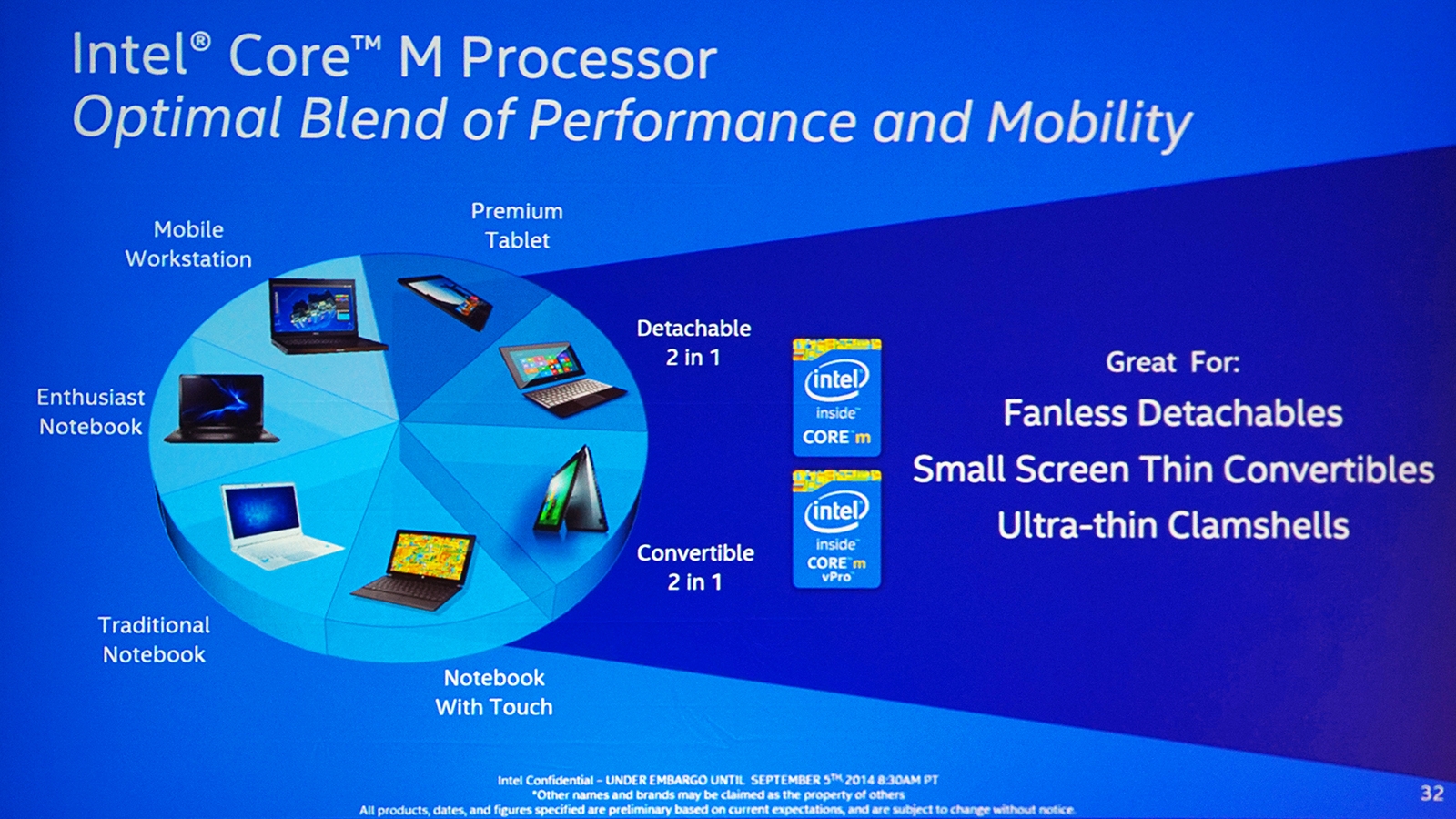 (Intel Core M-5Y31)
(Intel Core M-5Y31)
Unknown. Help us offer a price. (Intel Core m3-7Y30)
This means that the processor is more efficient, giving more performance per watt of power used.
Integrated graphics
GPU clock speed
300MHz
300MHz
The graphics processing unit (GPU) has a higher clock speed.
turbo GPU
850MHz
900MHz
When the GPU is running below its limits, it can jump to a higher clock speed to increase performance.
GPU Executors
Unknown. Help us offer a price. (Intel Core m3-7Y30)
A graphics processing unit (GPU) with more execution units can provide better graphics.
monitor support
By using multiple displays, you can increase your workspace, making it easier to work across multiple applications.
version of DirectX
DirectX is used in games with a new version that supports better graphics.
OpenGL version
The newer the OpenGL version, the better graphics quality in games.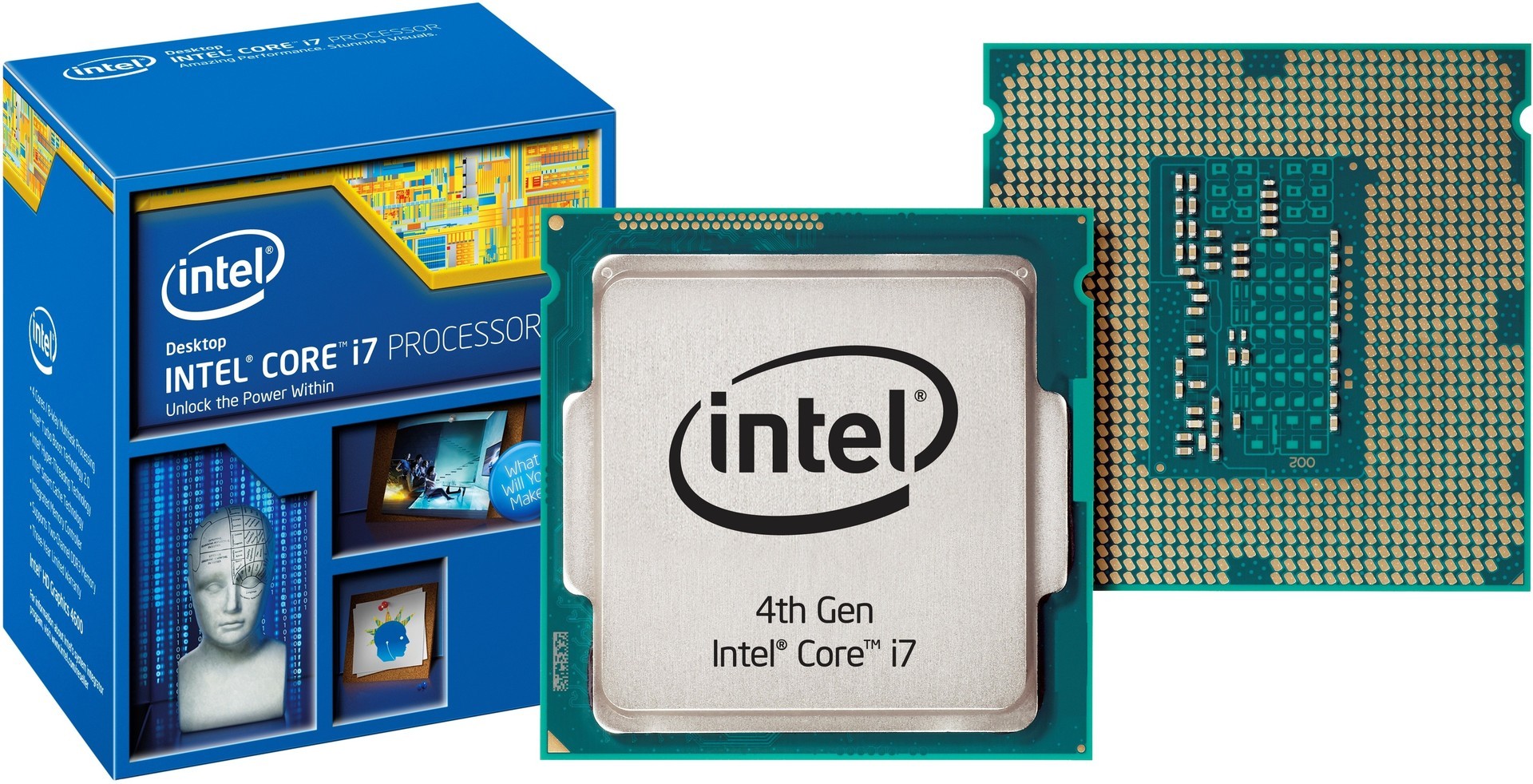
OpenCL version
Unknown. Help us offer a price. (Intel Core m3-7Y30)
Some applications use OpenCL to use the graphics processing unit (GPU) for non-graphical computing. Newer versions are more functional and better quality.
texture units (TMUs)
Unknown. Help us offer a price. (Intel Core M-5Y31)
Unknown. Help us offer a price. (Intel Core m3-7Y30)
TMUs accept textured units and bind them to the geometric layout of the 3D scene. More TMUs generally means texture information is processed faster.
imaging units ROPs
Unknown. Help us offer a price. (Intel Core M-5Y31)
Unknown. Help us offer a price. (Intel Core m3-7Y30)
ROPs are responsible for some of the final steps of the rendering process, such as writing the final pixel data to memory and for performing other tasks such as anti-aliasing to improve the appearance of graphics.
Memory
RAM speed
1600MHz
1866MHz
Can support faster memory which speeds up system performance.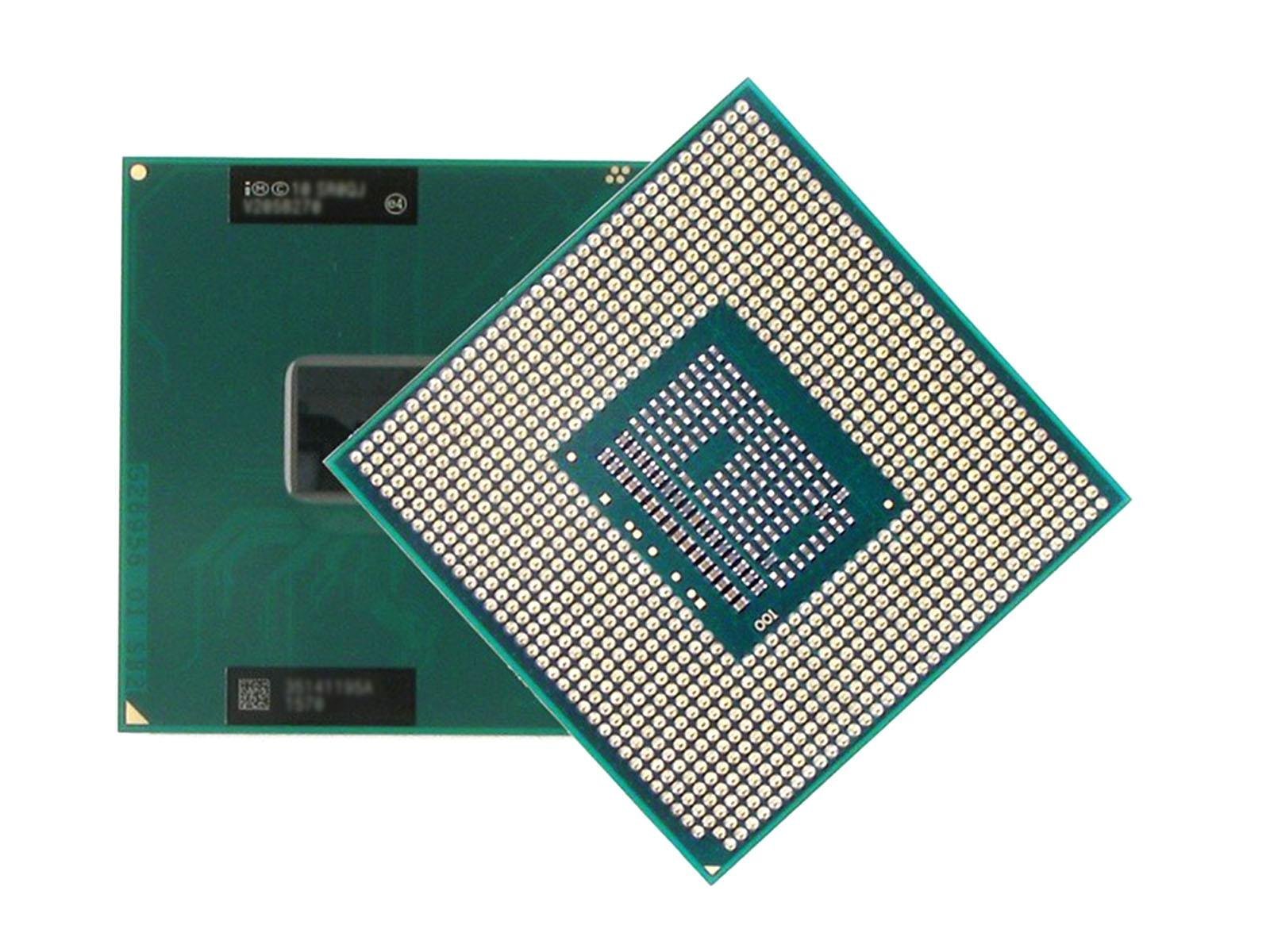
maximum memory bandwidth
25.6GB/s
29.8GB/s
This is the maximum rate at which data can be read from or stored in memory.
DDR memory version
Unknown. Help us offer a price. (Intel Core M-5Y31)
DDR (Double Data Rate Synchronous Dynamic Random Access Memory) is the most common type of RAM. New versions of DDR memory support higher maximum speeds and are more energy efficient.
memory channels
More memory channels increase the speed of data transfer between memory and processor.
maximum memory
Maximum memory (RAM).
bus baud rate
Unknown. Help us offer a price. (Intel Core M-5Y31)
The bus is responsible for transferring data between various components of a computer or device.
Supports memory troubleshooting code
✔Intel Core M-5Y31
✖Intel Core m3-7Y30
Memory troubleshooting code can detect and repair data corruption. It is used when necessary to avoid distortion, such as in scientific computing or when starting a server.
eMMC version
Unknown. Help us offer a price. (Intel Core M-5Y31)
Unknown. Help us offer a price. (Intel Core m3-7Y30)
A newer version of eMMC — built-in flash memory card — speeds up the memory interface, has a positive effect on device performance, for example, when transferring files from a computer to internal memory via USB.
bus frequency
Unknown. Help us offer a price. (Intel Core M-5Y31)
Unknown. Help us offer a price. (Intel Core m3-7Y30)
The bus is responsible for transferring data between various components of a computer or device
Functions
instruction sets
SSE 4.2, SSE 4.1, AVX, AES, F16C, MMX
SSE 4. 2, SSE 4.1, AVX, AES, FMA3, F16C, MMX
Instruction sets are sets of codes that the CPU executes for certain functions.
uses multithreading
✔Intel Core M-5Y31
✔Intel Core m3-7Y30
Multithreading technology (such as Intel’s Hyperthreading or AMD’s Simultaneous Multithreading) provides better performance by dividing each physical processor core into logical cores, also known as threads. Thus, each core can run two instruction streams at the same time.
Thus, each core can run two instruction streams at the same time.
bits transmitted at the same time
Unknown. Help us offer a price. (Intel Core M-5Y31)
Unknown. Help us offer a price. (Intel Core m3-7Y30)
NEON provides faster media processing such as MP3 listening.
Has TrustZone
✖Intel Core M-5Y31
✖Intel Core m3-7Y30
Technology is integrated into the processor to ensure device security when using features such as mobile payments and streaming video using Digital Rights Management (DRM) technology .
interface width
Unknown. Help us offer a price. (Intel Core M-5Y31)
Unknown. Help us offer a price. (Intel Core m3-7Y30)
Processor can decode more instructions per clock (IPC), which means the processor performs better
Has NX bit
✔Intel Core M-5Y31
✔Intel Core m3-7Y30
NX bit helps protect your computer from virus attacks.
VFP version
Unknown. Help us offer a price.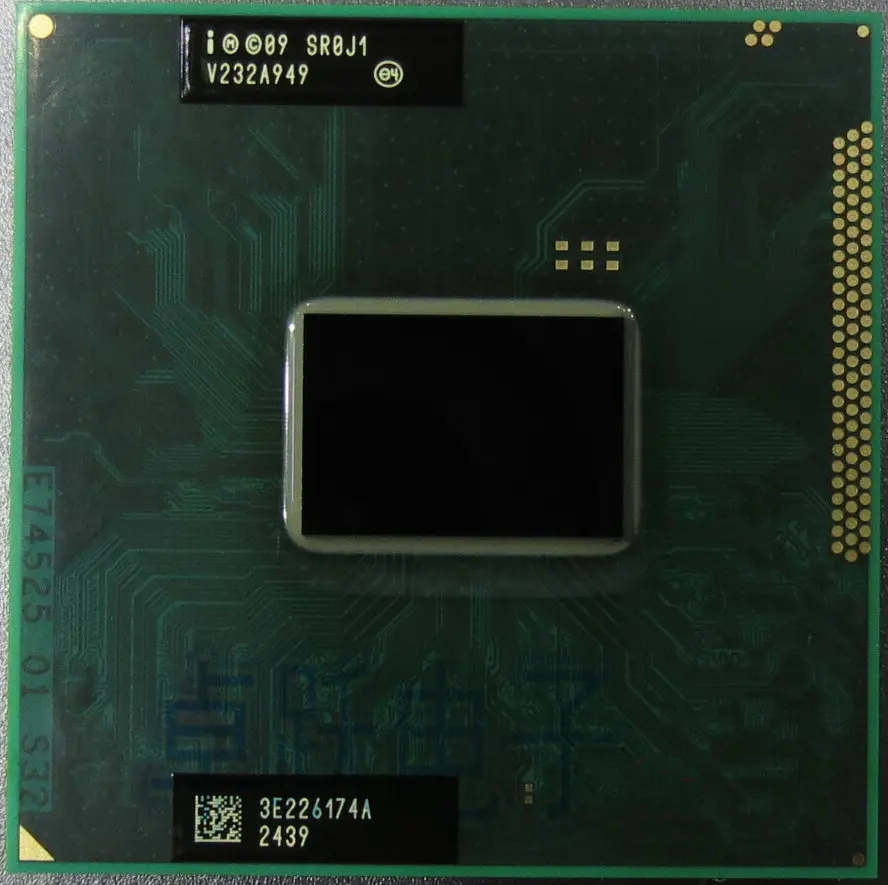

 3 GHz
3 GHz 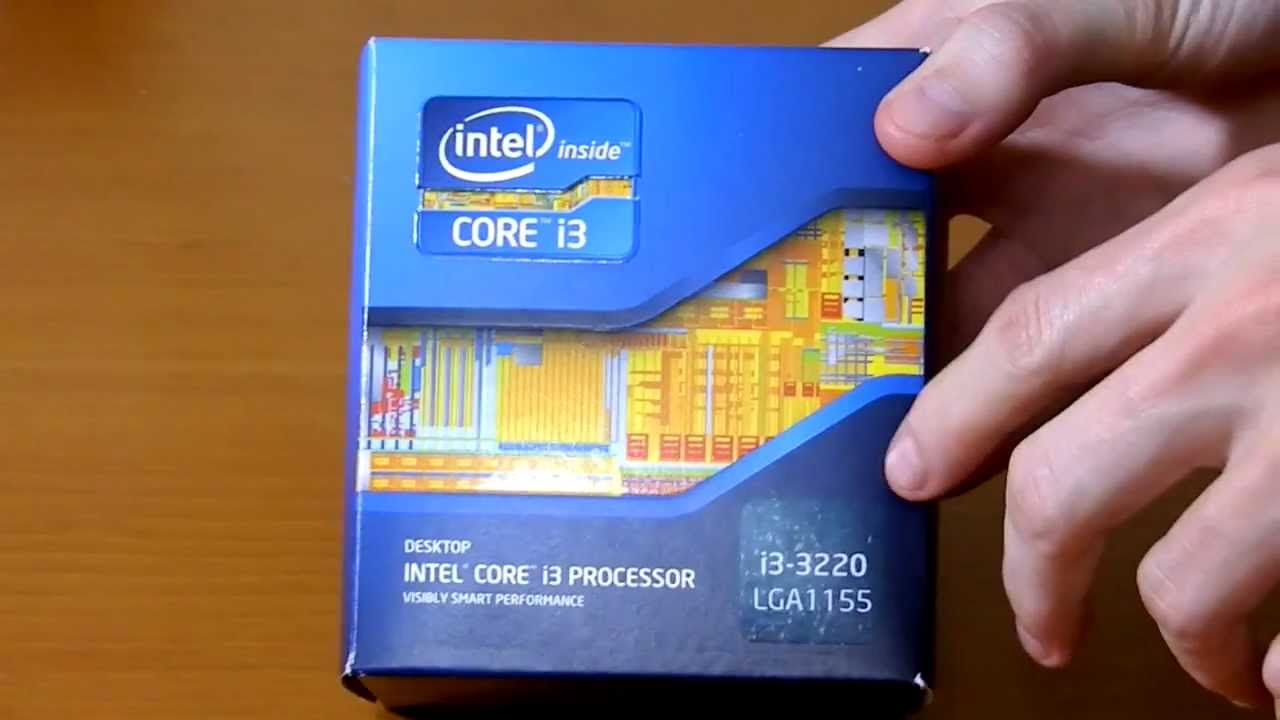 00603 hp
00603 hp  00939 hp
00939 hp